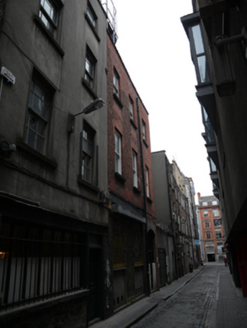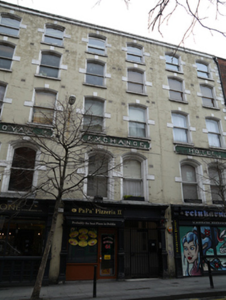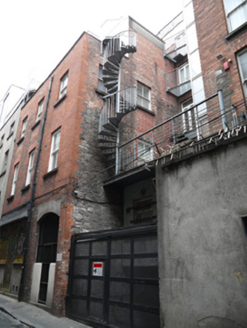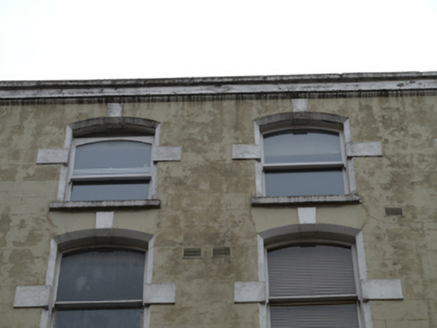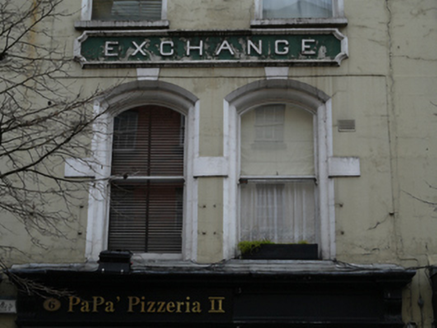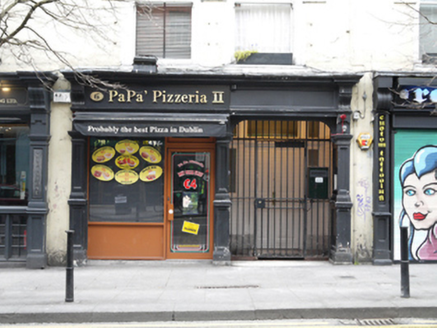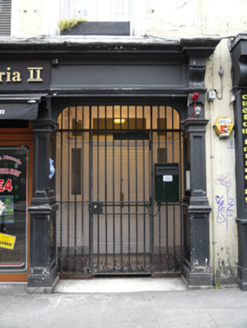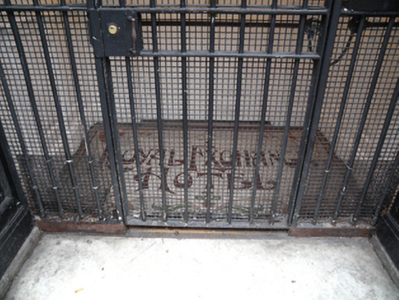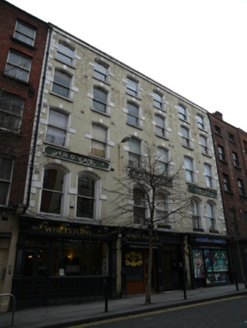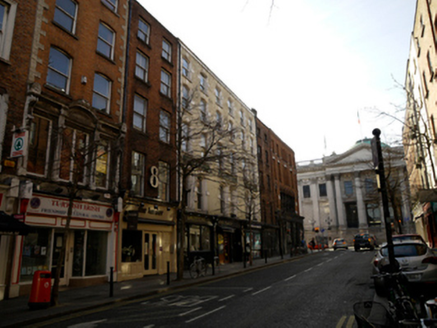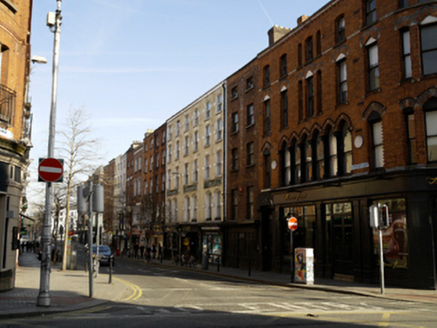Survey Data
Reg No
50020029
Rating
Regional
Categories of Special Interest
Architectural, Artistic, Historical, Social
Previous Name
Royal Exchange Hotel
Original Use
House
Historical Use
Hotel
In Use As
Apartment/flat (converted)
Date
1820 - 1860
Coordinates
315462, 234061
Date Recorded
28/02/2015
Date Updated
--/--/--
Description
Attached two-bay five-storey former house, built c.1840, having shopfront to front (west) elevation. Formerly in use as hotel, now in use as restaurant with apartments to upper floors. Recent single pitched roof to front hidden behind smooth rendered parapet having cornice, platband and cut granite coping. Flat roof to rear. Lined-and-ruled rendered wall to front with moulded render signage to second floor. Limestone rubble and red brick, laid in English garden wall bond, to wall to rear (east) elevation. Segmental-headed window openings having chamfered masonry surrounds and keystones, bull-nosed reveals to first floor openings, and one-over-one pane timber sliding sash windows throughout. Square-headed window openings to rear having granite sills and two-over-two pane timber sliding sash windows. Rendered shopfront having panelled pilasters with scrolled console brackets and cornice to fascia. Recent metal-framed window and door to restaurant. Basket-arch opening to upper floor entrance having recessed double-leaf timber panelled double door with overlight and sidelights, mosaic threshold, and recent metal gates. Metal external spiral stairs to rear. Situated on the east side and north end of Parliament Street.
Appraisal
Parliament Street is the first example of formal axial planning in mid-eighteenth-century Dublin. George Semple designed the rebuilding of Essex Bridge (1753-55) and his plan showed a new wide street linking the bridge to Dublin Castle, this plan for Parliament Street was implemented by the Wide Street Commissioners in 1762. Many of the buildings, including this one, were altered and rebuilt in the nineteenth century. Thom's Directory of 1862 lists this building as a confectioners. At the end of the century the upper floors became part of the Royal Exchange Hotel along with the neighbouring buildings. Alterations were carried out to the hotel in 1917 by architect Anthony Scott and in 1926 by architect Peter Francis Russell. The upper floors share characteristics with the neighbouring buildings, resulting in a coherent upper facade for the hotel. The render embellishments to the upper floor openings, a feature which became fashionable in the nineteenth century, articulate and enliven the façade. The decorative Art Nouveau threshold lettering adds artistic interest to the composition. The shopfront with its early twentieth-century classical detailing is a good example of its type.
